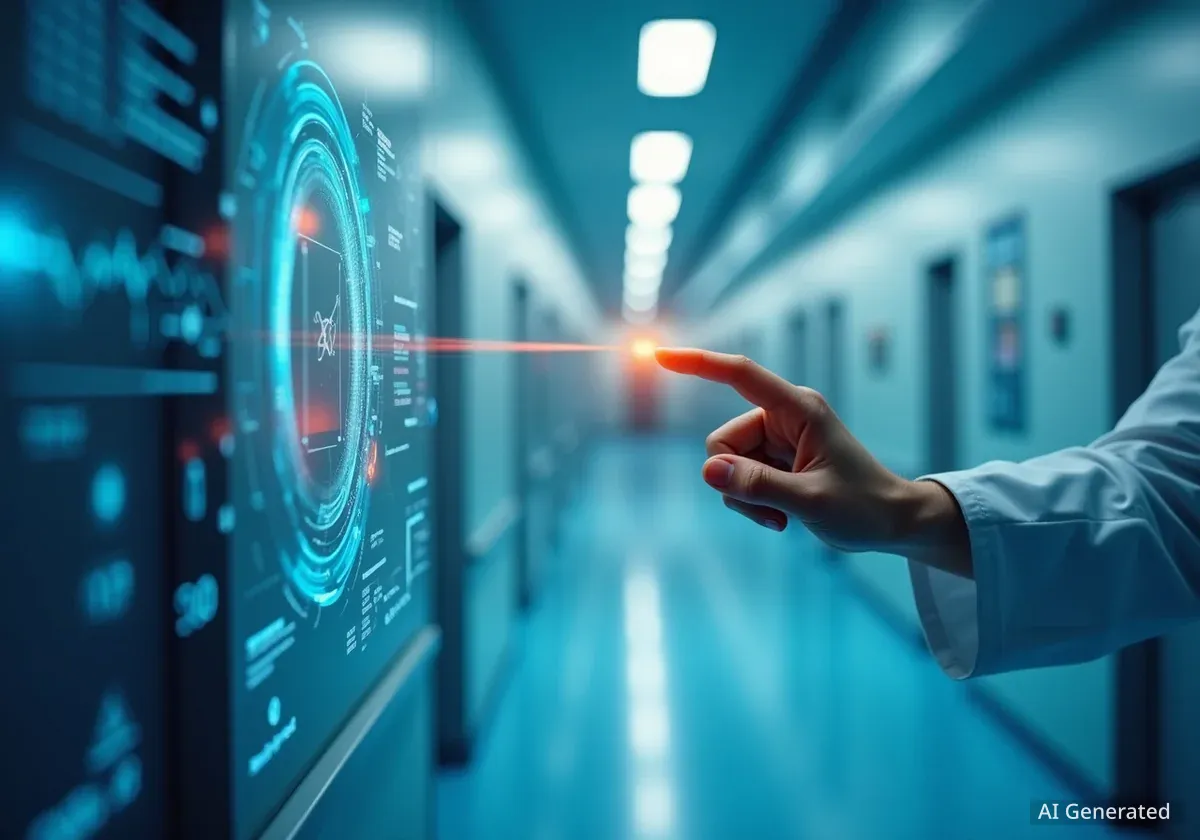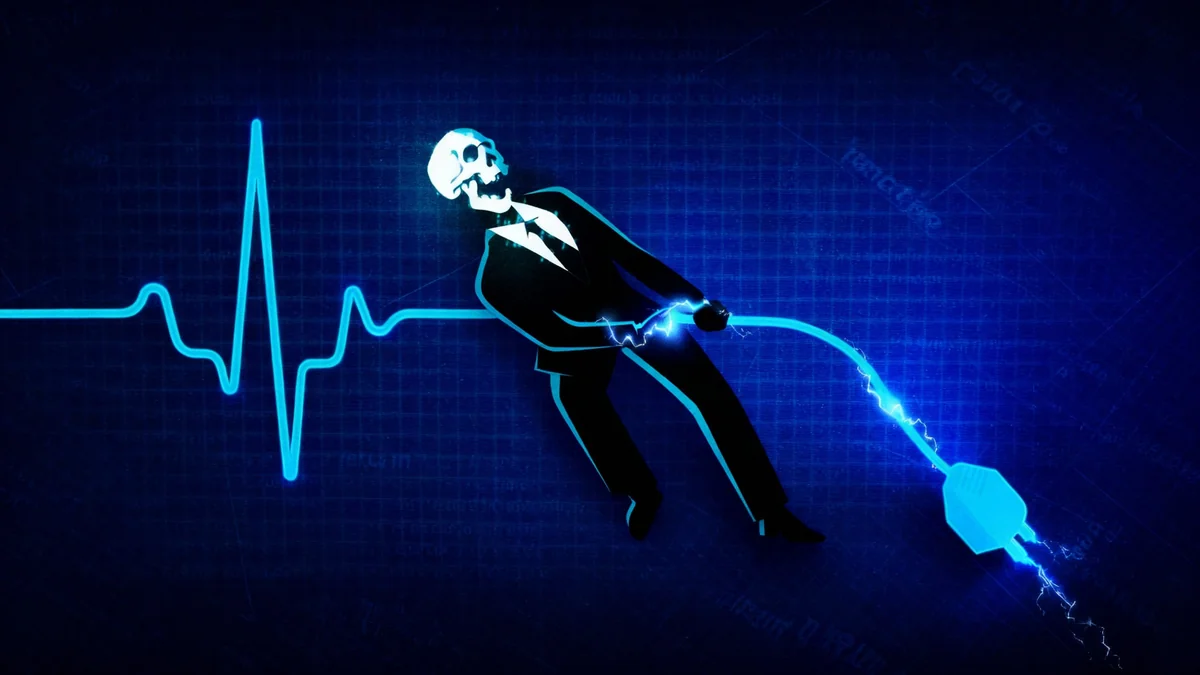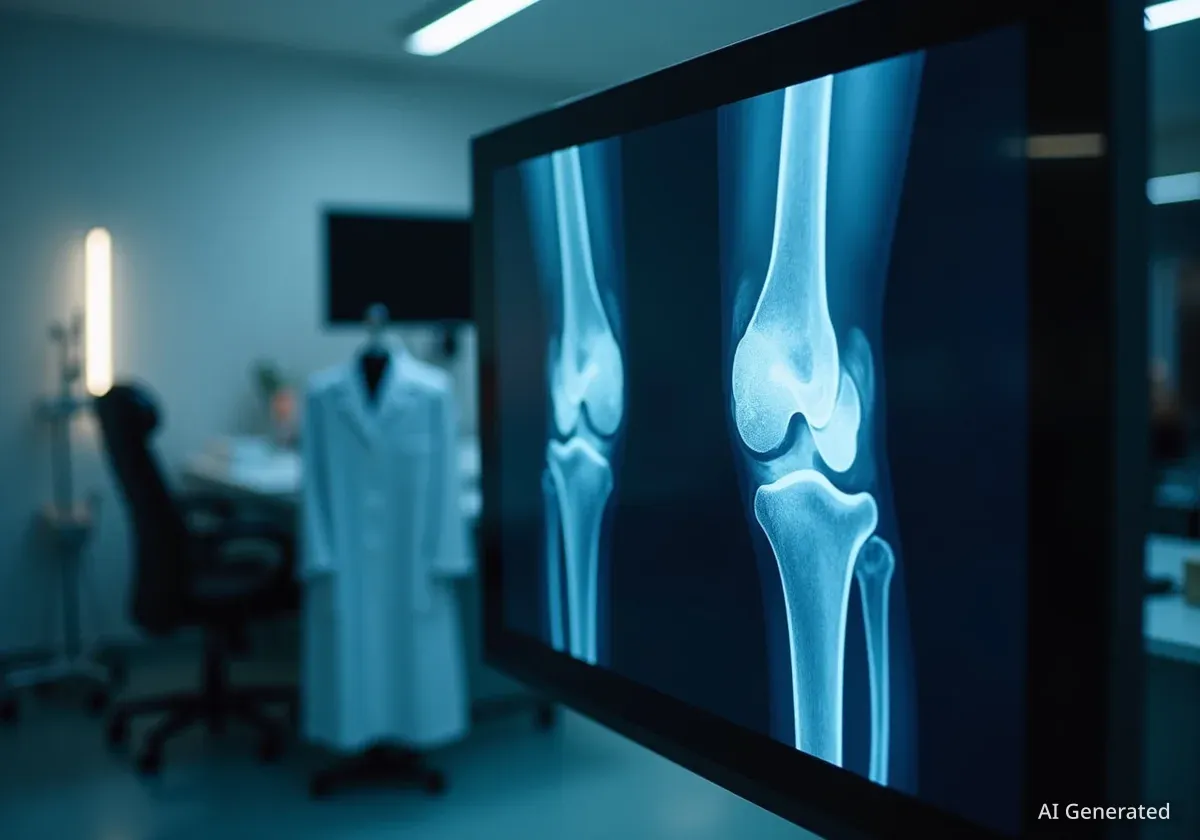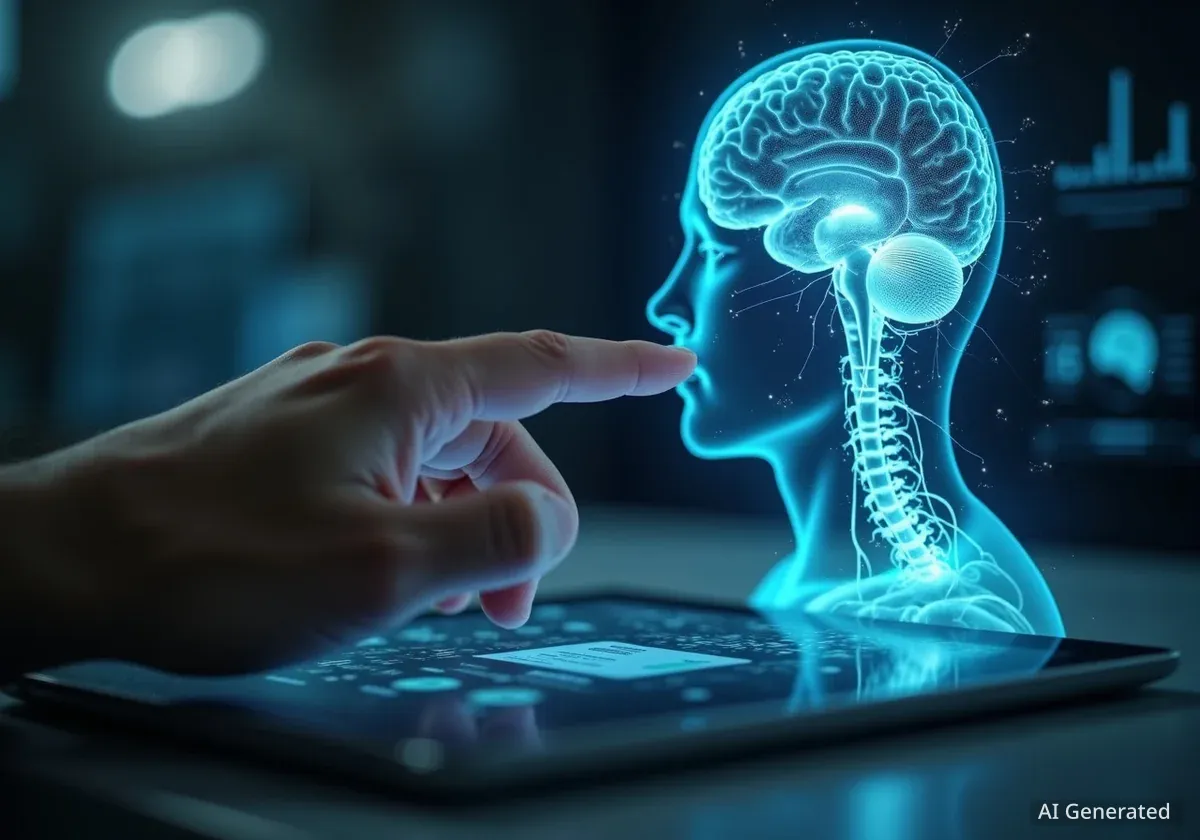Artificial intelligence is being integrated into Australia's healthcare system through various applications, from diagnostic tools that identify brain abnormalities to conversational bots that assist with home care. These technologies aim to improve patient outcomes and reduce the administrative workload on medical professionals, signaling a significant shift in how healthcare is delivered and managed.
Key Takeaways
- AI tools are being used in Australia to detect brain lesions, support mammogram readings, and predict disease outbreaks.
- A trial involving an AI voice bot for home care clients has shown potential for providing social interaction and monitoring well-being.
- General practitioners are adopting AI scribes to automate consultation notes, freeing up more time for patient interaction.
- Experts emphasize that while AI supports clinicians, the final medical decisions remain with human professionals.
AI in Patient Care and Diagnostics
Artificial intelligence is no longer a concept of the future in Australian medicine; it is an active component in various clinical settings. From interpreting complex medical scans to assisting with daily patient check-ins, the technology is being deployed to enhance efficiency and accuracy.
One of the most promising areas is medical imaging. Prof Enrico Coiera, founder of the Australian Alliance for Artificial Intelligence in Healthcare, notes that AI has been a standard part of healthcare for a long time, particularly in background services like analyzing pathology results and cardiograms.
However, recent advancements in deep learning have significantly expanded these capabilities. This type of AI, which uses neural networks to learn from vast datasets, is now being used to improve diagnostic precision in fields like radiology.
Breakthroughs in Epilepsy Detection
A notable example comes from the Murdoch Children’s Research Institute in Melbourne. Researchers there collaborated with a team from UCL London to refine an AI tool that detects brain abnormalities known as focal cortical dysplasias from MRI scans.
These lesions are a common cause of epilepsy and are often resistant to medication, making surgery the only viable treatment. The challenge for doctors has been accurately locating these small abnormalities. The new AI tool acts as an "epilepsy detective," highlighting suspicious regions on scans for neurologists to review.
High Success Rate in Trials
In a study published in the journal Epilepsia, the AI tool successfully identified lesions in up to 94% of cases for a subtype that is typically missed more than 60% of the time. The AI was trained on 54 patient scans and then tested on a group of 29 patients. Following the AI-assisted diagnosis, 12 children underwent surgery, with 11 of them now living seizure-free.
Dr. Emma Macdonald-Laurs, who led the research, stressed that the work is still in its early stages but shows immense promise. Prof Mark Cook, a neurologist not involved in the study, described the technology as a powerful support for clinicians trying to find a "needle in the haystack" within massive amounts of MRI data.
Reducing Administrative Burdens
Beyond diagnostics, AI is also being used to streamline administrative tasks, which have long been a major consumer of healthcare professionals' time. This allows doctors, nurses, and other staff to focus more on direct patient care.
AI Scribes in General Practice
General practitioners across Australia are increasingly using AI scribes. These tools listen to and record a doctor-patient consultation, then automatically generate a summary note that can be added to the patient's medical record.
Dr. Michael Wright, president of the Royal Australian College of GPs, said the primary benefit is the improved quality of interaction between doctor and patient. Instead of typing notes during a consultation, the GP can maintain focus on the person in front of them.
"What we can do very safely, with technology like this, is reduce the admin burden on the workforce so qualified health professionals can focus on doing the job that they’re trained to do," said Dr. Tina Campbell, managing director of Healthily.
Dr. Danielle McMullen of the Australian Medical Association echoed this sentiment, adding that AI could also help prevent the duplication of tests and scans by better managing digitized health records.
AI in Home and Public Health
The applications of AI extend beyond the hospital and clinic. New initiatives are exploring how the technology can support individuals in their homes and help public health officials monitor for potential disease outbreaks.
A Conversational AI for Home Care
St Vincent's At Home recently concluded the first phase of a trial using a generative AI voice bot named Aida. The bot, developed by Healthily, made daily check-in calls to home care clients to provide social interaction and monitor their health.
Peta Rolls, a 79-year-old participant, was initially skeptical but found the bot to be surprisingly responsive. "She’d always ask ‘how you are today?’ and that gives you an opportunity if you’re feeling sick to say you felt sick," Rolls explained. The bot would also ask about her plans for the day and respond appropriately to her answers.
Dean Jones, national director of St Vincent’s At Home, clarified that the service does not replace human interaction. Clients continue to receive their weekly face-to-face visits, but the AI provides an additional layer of daily support. The system is designed with safety protocols to escalate any serious concerns, such as reports of chest pain, to the care team or family members.
Predicting Disease Outbreaks
On a larger scale, AI is proving to be a valuable tool for public health. According to Dr. Stefan Buttigieg of the European Public Health Association, deep neural networks are being used to monitor and predict disease outbreaks.
He pointed to the company Blue Dot, which used AI to become one of the first organizations to detect the COVID-19 outbreak. By analyzing vast amounts of data from various sources, these systems can identify patterns that might signal the emergence of a new public health threat.
The Future of AI in Medicine
While the integration of AI in healthcare is still evolving, its potential is clear. Experts believe the technology will lead to more personalized medicine, moving away from the traditional one-size-fits-all approach to treatments and care plans.
Prof Coiera emphasized that even with advanced AI, the ultimate responsibility for medical decisions rests with the human practitioner. These tools are designed to support, not replace, the expertise and judgment of doctors and specialists.
As these technologies become more refined and widely adopted, they are set to play an increasingly important role in making healthcare more efficient, accurate, and personalized for patients across Australia and around the world.





